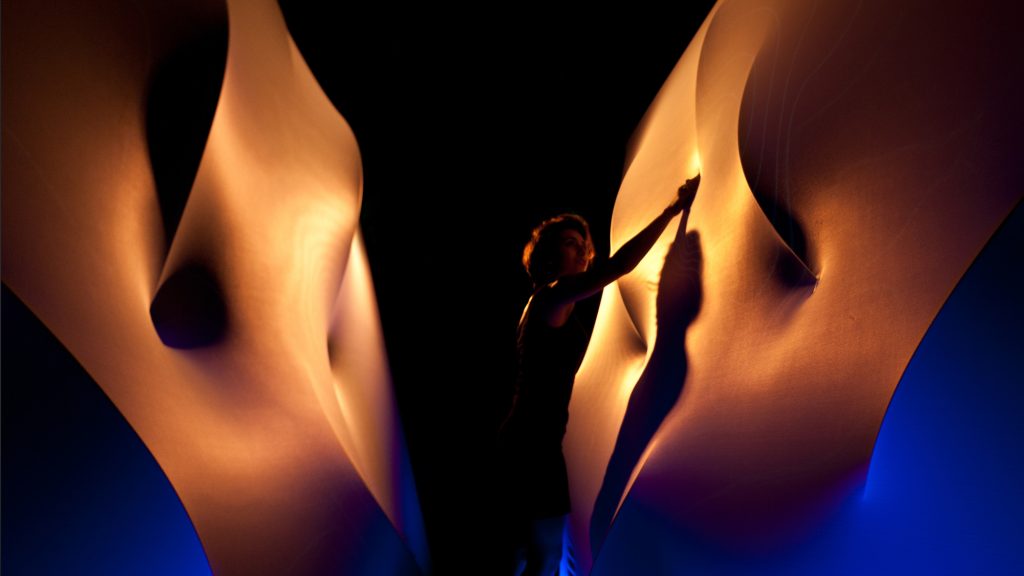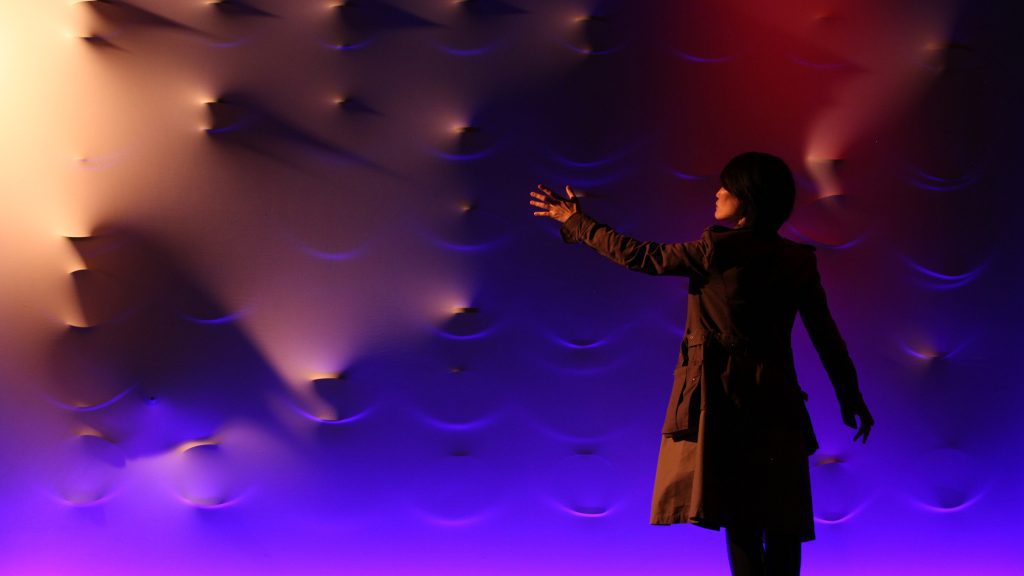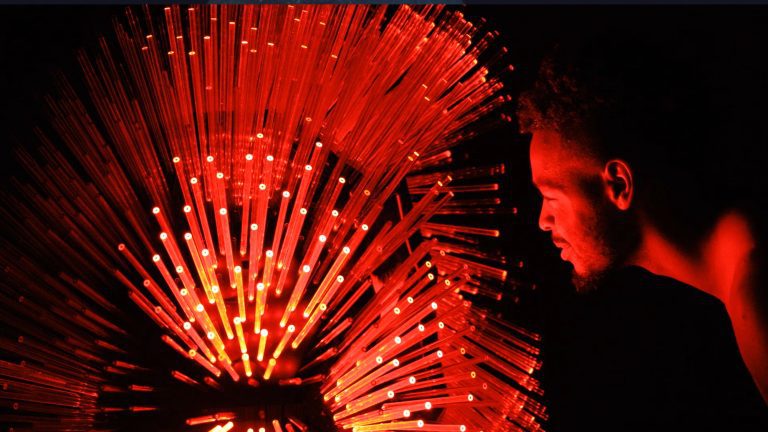
Breathing Wall

Living Breathing Wall
In a world where technology often feels cold and impersonal, Behnaz Farahi redefines the human-machine relationship with her visionary designs. Blurring the line between body and environment, her work marries robotics, AI and interactive media with deep emotional resonance. At the intersection of art and innovation, Farahi’s designs invite us to rethink the role of technology – creating spaces that not only adapt to us but connect with us on a visceral level. How can art and technology come together to evoke empathy and reshape the way we experience our surroundings?
hube: Your work often explores the intersection between the human body and its environment, using emerging technologies to create interactive experiences. What drives your interest in this dialogue between a human and a machine?
Behnaz Farahi: I am particularly intrigued by the ways in which the boundaries between our physical bodies and the environments we inhabit can blur, allowing us to interact with the world in new, intuitive, and expressive ways. These tools enable us to challenge conventional perceptions of space, social interaction, materiality, and identity, creating environments that are not just static but actively responsive to human presence.
Emerging technologies enable us to detect, analyse, and interpret physiological signals from the body – data that is typically intangible and beyond our reach. These technologies offer unprecedented insights into human responses, translating subtle emotions, movements, and biofeedback into interactive experiences.
I am also fascinated by how materials in our surroundings can become active and dynamic, changing their shape, colour, or behaviour through the integration of emerging technologies.
By blurring the line between machine and material, we enter a space where materials become machines, and machines behave like materials. Ultimately, my work aims to foster an empathetic relationship between humans and the environments they inhabit, creating spaces that respond, adapt, and engage with us on an emotional and sensory level.
h: Your recent appointment as an Assistant Professor of Transformative Design at MIT Media Lab is a significant milestone. How do you plan to use this platform to push the boundaries of design and technology in addressing societal challenges?
BF: My appointment as Assistant Professor of Transformative Design at the MIT Media Lab is an exciting opportunity to explore the intersection of design and technology in innovative, socially impactful ways. I aim to push the boundaries of what design can achieve by moving beyond the application of technology towards its critical and imaginative use. This will involve creating projects that provoke dialogue, elevate underrepresented voices, and challenge traditional perspectives on identity and society.
The unique, interdisciplinary environment of the Media Lab – where brilliant minds come together to rethink what’s possible – offers incredible access to cutting-edge resources and technologies. I plan to leverage this platform to develop transformative experiences that not only address design challenges but also inspire new ways of thinking about the role of design in shaping our collective future. Through this platform, I hope to foster conversations that use art and design as catalysts for social change and innovation.

